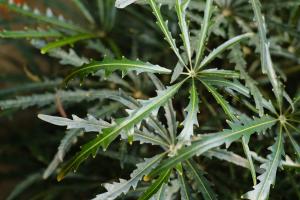1、 Curing method
1. Temperature: 15 to 25 degrees is more appropriate. In its growth period and breeding period, it can be maintained within this range, which is more appropriate. In addition, its cold resistance is quite good. It can basically spend the winter by itself if it is cultured in the south

2. Light: milkvetch is a plant that prefers sunshine. Therefore, it is best to provide good sunshine conditions when it grows fast and blooms. However, try not to have too much light. Especially in summer, try to shade a little

3. Watering: milkvetch likes humid climate, and wild milkvetch will also grow in humid places. Therefore, in order to meet its requirements, try to supplement sufficient water, especially in arid areas

4. Fertilization: if the milkvetch is planted in a large area, it can be fertilized intensively. Generally speaking, the fertilizer used is calcium superphosphate

2、 Breeding skills
1. Reproduction: it is a common way of sowing, and it is sowing in a large area. It is most suitable to breed from late September to early October. Before sowing, it's best to sun the seeds, and then put them into salt water to remove the inappropriate seeds. Choose a good place to sow, then sow, then spray, not too dry. p>

2. Pruning: at ordinary times, its branches, leaves and flowers can be pruned, especially when it is cultivated as an ornamental plant. The pruning of its branches and leaves can be carried out in spring. The dense and dry branches and leaves can be repaired, leaving only strong branches. After flowering, the remaining flowers can be trimmed

3、 Problem diagnosis and treatment
1. Disease: for milk vetch, the disease is most likely to occur in spring. The main disease is "Sclerotinia Disease", which needs to be disinfected with lime powder, the diseased plants need to be cleaned up in time, and the water should be drained in time

2. Insect pests: there are many kinds, such as "thrips", "leaf miner", "aphids", etc. imidacloprid and other pesticides can be used

4、 Other issues
1. Flower language: Astragalus also has its unique plant culture. Its flower language is "happiness", which has a better meaning. Therefore, it is also more popular

2. Toxicity: there are toxic and non-toxic varieties of Astragalus, which need to be distinguished before planting


 how many times do yo...
how many times do yo... how many planted tre...
how many planted tre... how many pine trees ...
how many pine trees ... how many pecan trees...
how many pecan trees... how many plants comp...
how many plants comp... how many plants can ...
how many plants can ... how many plants and ...
how many plants and ... how many pepper plan...
how many pepper plan...































